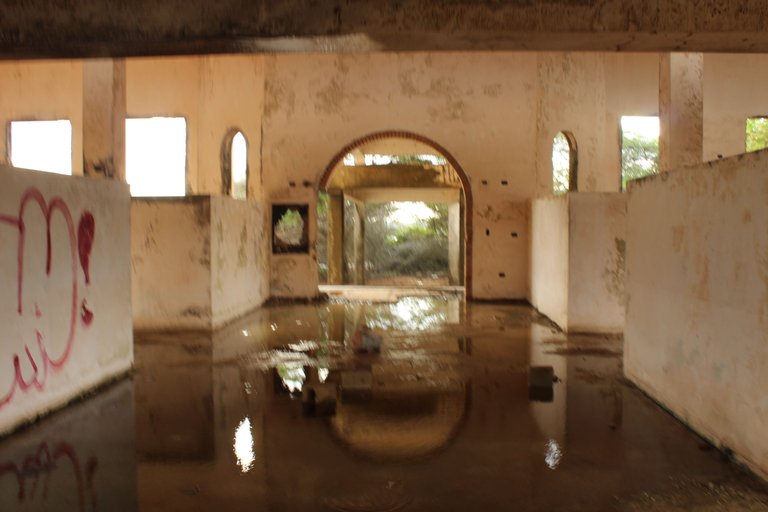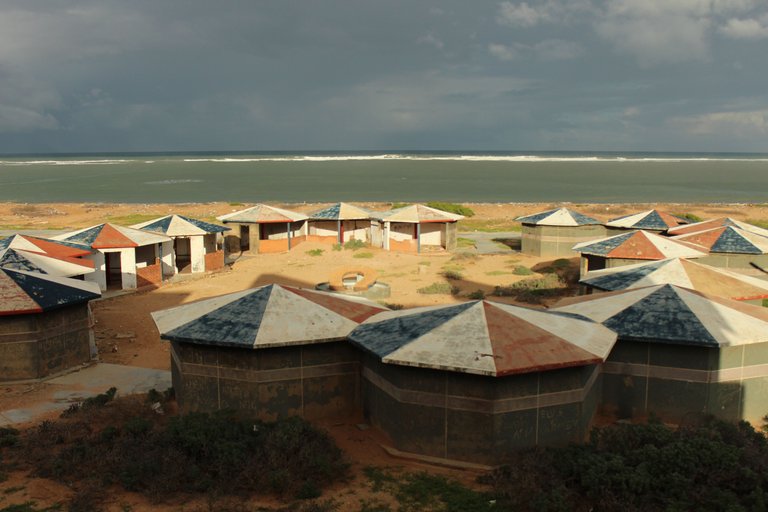. . .
Guacoa is a videodance, made in the year 2017. In one of the previous post I was able to publish it but I decide to take it up again because I want to tell you how the process was and where it came from.
In the year 2016-2017 during the 1st semester of Dance and Movement Arts I was studying a Chair called Image and Sound Laboratory, during the first months, of not understanding anything to the teacher, we were experimenting with the edition of sounds and images and he, He always emphasized a happy "final work". When they named it ALL, we fell into a terrible anxiety. This work consisted in the realization of an audiovisual project of approximately 1 minute of duration. It seemed wonderful to be able to experiment, but fear was inevitable, however, at that moment I was invaded by a great need to do something and do my best
At the same time, I saw another chair called Body Techniques I: Yoga. It was very beautiful and satisfying the body process during that time. At the end of the chair we had to create a "Yoga-Dance". Personally, I do not get used to these supposed fusions that result in the movement of the body, in the end it is the same, they start and need the same thing: Dance with something else or Yoga with something else. In short, it is a product of the human being and his need to name everything. But in the end you always get beautiful projects.
Like all audiovisual work, it had to have a story and adaptation to a literary script, a technical one and their respective sketches. In the first moment, I only had three clear things in terms of image: I wanted a big window, warm colors and a beautiful sunset light.
For this first idea I was able to resort to a location that fulfilled all my expectations, it is beautiful and too nostalgic for me; It also gives me a little fear and insecurity but seeing the sunset, the sea on one side and the salt pans on the other, it is easy to forget about all that. This place is called the Ruins of the Médano Caribe Tourist Complex, it is located in the Paraguaná Peninsula near the town of Cumaraguas in the Falcón State.
In the middle of the 90s it was a Tourist Complex of great popularity in the Peninsula of Paraguaná (Falcón State, Venezuela) but with the arrival of Rafael Caldera (from 1994), later with the revolutionary wave and other illegal factors around it , the Complex was abandoned by its owners, leaving the facilities totally intact, being the best banquet for saltpeter and the fury of the unemployed, not to mention all the loose ends they left behind. (In another post I will tell you more about this interesting place and all the stories around it, I promise.)
This would be the chosen location but I did not take into account certain production details that I will tell you later. I leave some photos of this wonderful place.



Tania a beautiful place but, what about the story? At this time I had the following: I wanted to use a myth or a story from words in Arawak. Arawak is the name given to refer to indigenous peoples and their language, these are settlements in Venezuela, Colombia, Brazil and the islands of the Antilles.
In Venezuela within the Arawak family are ethnic groups and are named according to the demographic zone. In the region of Falcón and Lara settled the family of the Caquetíos. There are also other families such as the Añú (zone of Zulia), Achaguas (zone of the hurry), Banivas, Ciparicotos, among others.
Of so many questions made to @maticaderuda and without being able to specify anything. I ended up resorting to the place and the sensations that it generated in me: fear and loneliness, that is where the soul or the soul that is fluttering in the place arises. This joined the desire to use the legacy of the Caquetía language.
To get into the Arawak language, I found a text published by the University of the Andes by Miguel Enrique Zavala Reyes called "Living words of a dead language, Legacy Arawak-Caquetío". I recommend reading the text, it is very enriching, you will find wonderful things.
For the elaboration of the work, this text was fundamental, I found what was necessary to define the story, I took 2 key words: Guacoa which is dove and Barsure which is soul, spirit or anima. From this game of words and with the help of @maticaderuda the following arises:
La Guacoa (paloma) fiel anida en aquel lugar, por las tardes ve al ánima deambulando, como si algo quedó inconcluso entre ella y el mar.
Listo. Ahora a la producción. Los oolaboradores fueron Leonardo Petit y Leonel Padilla (dolly y maquinas), Nileanny Petit (cámara y foto) y Leonardito Petit(entretenía a todos en la locación). Un solo día de rodaje, un atardecer y ya, no había más tiempo. Era ese el momento y no había previsto el mal estado del suelo, fue doloroso realizar todos los movimientos y repetirlo varias veces solo con celoven en la planta de los pies...
But I think, it was worth it ...
. . .
Guacoa participated in the First sample of video and dance photography, Cuadro por Danza. Made in Caracas in the year 2017.
Thanks:
To all collaborators.
Many thanks to Ronald Colina for the poster.
Professor Oswaldo García
Sources:
Living words of a dead language. Legacy Arawak-Caquetío
Photographs: @maticaderuda


Tu arte es hermoso. Felicitaciones. También son hermosas las locaciones. Lástima que, como refieres, estén abandonadas. aliriera
Uno de mis sueños (espero cumplirlo), es devolverle la vida a ese sitio. ¡Mil gracias!
Qué bueno verte por acá de nuevo.
No leemos. Saludos.
Congratulations @leopetitpp! You have completed some achievement on Steemit and have been rewarded with new badge(s) :
Click on any badge to view your Board of Honor.
For more information about SteemitBoard, click here
If you no longer want to receive notifications, reply to this comment with the word
STOPDo not miss the last announcement from @steemitboard!